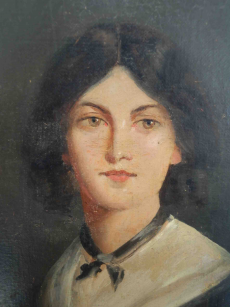
Email: reecejordan98@hotmail.co.uk
Total Article : 168
About Me:18-year-old sixth form student, studying English Literature, History and Government and Politics. My articles will broadly cover topics from the current affairs of politics to reviews of books and albums, as well as adding my own creative pieces, whether it be short fiction or general opinion.

In Bronte’s essay, ‘The Butterfly’, she muses on the state of the world through the metaphor of a caterpillar and the subsequent fluttering of a butterfly. In this essay she questions the callousness of the world, and even goes as far as to question God for making something, and us, so cruel. – “At that moment the universe appeared to me a vast machine only to produce evil”. This comes when she sees a caterpillar eating away at leaves; but this image is swiftly followed by the emergence of a butterfly, which she claims, “is a symbol of the world to come”, and that “this globe is the embryo of a new heaven”.
The main premise of this essay, then, is to draw attention to positive metamorphosis, and to illustrate how this is like the “new world to come”. How then, can we read Wuthering Heights as mirroring such an essay? Well it revolves around the novel’s cyclical structure, its theme of creation and its biblical metaphors. Most importantly, we must look at the differing lives of the two Catherines and the two volumes that revolve around them.
The first volume can be seen as a commentary and critique of 19th century Britain, especially with regards to women. During this time, women were viewed as to embody gentility and mannerisms, and that their only way to achieve success and status was to marry a man as such. This is seen through Cathy’s choice, or rather her perceived obligation, to marry Edgar over her true love of Heathcliff. As we know, Cathy believed that her and Heathcliff were spiritually identical (“whatever souls are made of, his and mine are the same”), so why did she marry Edgar, who, as she says was as different to her “different as moonbeam from lightning, or frost from fire”? To understand this, we must look further into Catherine’s childhood when she and Heathcliff ran off to the Grange.
The depiction of the Grange fits that of 19th century societal perfection with its manners, cleanliness (the first thing the Linton family do is clean Cathy’s feet) and gentility. Indeed, Bronte depicts it has having a heavenly exterior (saturated with “gold” and “white”) and even has Heathcliff say “we should have thought ourselves in Heaven!” But Bronte subverts this heavenly depiction by giving it hellish undertones – juxtaposing the gold and white with “carpets of crimson” and having the Linton family crying “as if witches were driving red hot spears into them”. This paradox is emphasised further when Cathy is “seized” by the dog of the Grange, which precedes her five weeks there, after she returns daintily dressed and afraid to be Heathcliff because of his dirtiness. The fact that Cathy is “seized” by the Grange, rather than willingly going in mirrors her decision to marry into such a household. It is too simplistic to see Cathy as merely being greedy and callous in her choice to marry Edgar – the social conditions and expectations forced (seized) her to.
Image Credits: playbuzz.com

0 Comment:
Be the first one to comment on this article.